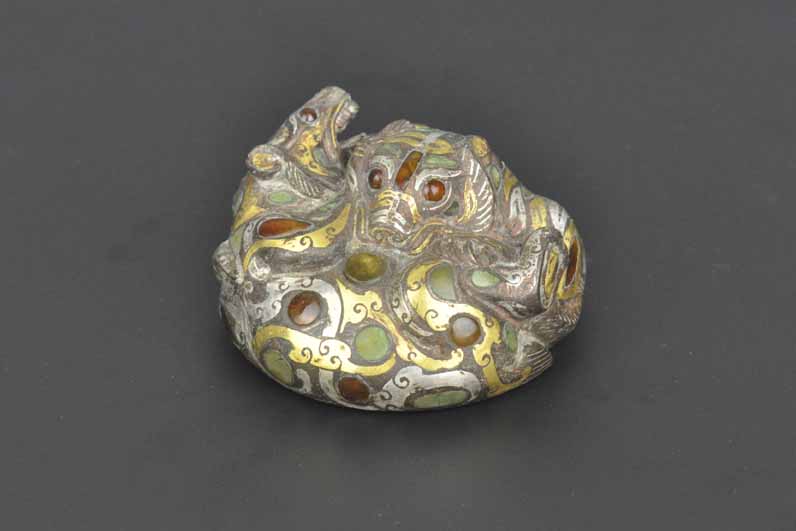NANJING IS THE hugely prosperous capital of Jiangsu Province. Surrounded by heavily wooded hills with luxurious vegetation, it still has many of its original high Ming walls, now crumbling with all the pleasure of ruins. The Yangtze, wide, swollen and somewhat menacing, flanks the west of the city. Unbearably hot and humid in summer – with Wuhan and Chengdu, it is known as one of the ‘furnace cities’ – it also still epitomises the concept of the ‘south’ in Chinese literature – the warmth and softness as opposed to the extremes of the north and northwest. It has been a centre of literature and culture, as well as of power. And the Nanjing Museum Collections.
Former Capital of China
Nanjing was the capital of China from the 3rd to the 6th centuries, and during the early years of the Ming dynasty from 1368 to 1403 when the modern city was founded. On 1 January 1912, it was from Nanjing that the new Republic of China was proclaimed. Later, it was the Kuomintang capital from 1928-1937 and from 1945 to the founding of the new republic in 1949 – hence, its nickname ‘The Metropolis of the Ten Dynasties’.
After Japanese Deafeat During WW2
After the Japanese defeat in 1945, Chiang Kai-shek ruled again from Nanjing, until his final defeat and flight to Taiwan in 1949. His hasty departure meant he left behind a large part of the great imperial art collection that he had removed from Beijing in 1927 to avoid it falling into Japanese hands, moving it first to Nanjing, then to Chonqing and then back to Nanjing in 1945. These treasures form the core of the collection of the Nanjing Museum.
Along the way, the museum acquired treasures originally housed in the Mukden (present day Shenyang) and Rehe imperial palaces and purchased other items from Songzhai of Guangdong and Shanzhai of Anhui, as well as receiving a large bequest from the Swedish explorer, Sven Hedin who between 1927-33 conducted paleontological expeditions in Inner Mongolia and Xinjiang. It also inherited the extensive collections of the original Jiangsu Provincial Museum. The collections in the Nanjing Museum are without a doubt a must see for anyone keen to learn about China’s past.
Museum Complex Consists of Three Main Buildings
Built near the Zhongshan Gate to the east of the city and south of Purple Mountain and towards the tomb of Sun Yat-sen, the museum complex consists of three buildings, the newest of which was opened in November 2013 by director, Gong Liang. This second phase of reconstruction and extension of the museum complex was started in 2009 and has created an additional six exhibition halls and an equal number of research institutes, ranging from technological and ancient architecture institutes – to one devoted to research on the archaeology of Jiangsu.
The New Extension
The addition of the new extension allows the museum to show off considerably more of its fabulous holding of some 420,000 pieces (which increases weekly as excavations in the province unearth new finds), of which more than 2,000 are national treasures. It also provides several galleries to host special national and international exhibitions, expanding its already active exchanges with foreign museums ranging from Australia to Mexico. The museum also houses a major collection of manuscripts and books in new, spacious temperature and humidity controlled space open to scholars by appointment.
Extensive Collection of Bronzes in the Nanjing Museum Collection
Allow several hours to visit the complex and stop for refreshment along the way so that you do not miss any of the spectacular galleries or host of treasures the museum has on offer. Among the numerous ones that should be on all visitors’ lists are: the extensive holdings of bronzes, including the Shang dynasty (1600-1046 BC) taotie-decorated bronze ding unearthed in Lianyungang and the three-ram lei from the Neolithic period (4300-2500 BC) unearthed at Jiangning, which show that spread of Shang culture throughout Jiangsu Province.
Also search out in the Nanjing Museum the Eastern Han dynasty (25-220) bull-shaped bronze lamp inlaid with silver; the extensive and newly, beautifully displayed abundant collection of jade ware from the periods from the Neolithic Age to the Ming and Qing dynasties – among which are the colourful jade artefacts from the excavations of the Liangzhu culture in Jiangsu dating from the Western and Eastern Han dynasties.
There is also the ingeniously constructed, six-part revolving, gold-decorated blue-glazed reticulated vase with the Qianlong emperor in a hunting scene from the Jingdezhen official kiln, with an inner vase which spins and unfolds the hunting scene.
Calligraphy and Paintings in the Nanjing Museum
And there are endless masterpieces in its collection of over 38,000 calligraphic works and paintings – including great works by many of the distinguished modern artists, such as Chen Zhifo, Fu Baoshi and Hu Xiaoshi; an impressive collection of gold and silver pieces of outstanding quality, some from the Qing imperial storehouse and others from excavations – many key to the history of the art of metal craftsmanship, such as the gold belt hook with dragon design from the Warring States period (475-221 BC), the Yuan dynasty (1271-1368) hammered and engraved gold plate with designs of interlocking lotus branches regarded as the zenith of the gold and silver art of the period; an especially rich collection of Buddha statues made from a range of materials – including gold; and among the finest collections of high-quality textile and embroidered pieces from the collections of the former imperial palaces and private collections.
BY CATHY GIANGRANDE
A guide to the masterpieces of the collection written by the director Gong Liang was published in March 2014, Nanjing Museum, ISBN 978 1857 598 636, £20/$30.
Nanjing Museum, 321 Zhongshan East Road, Nanjing City 210016, www.njmuseum.com

